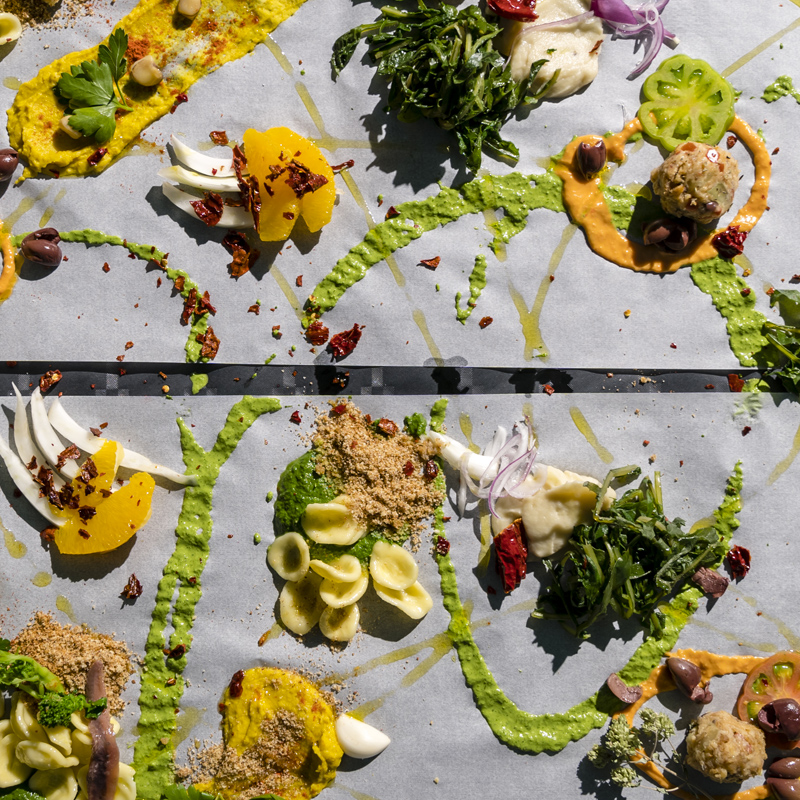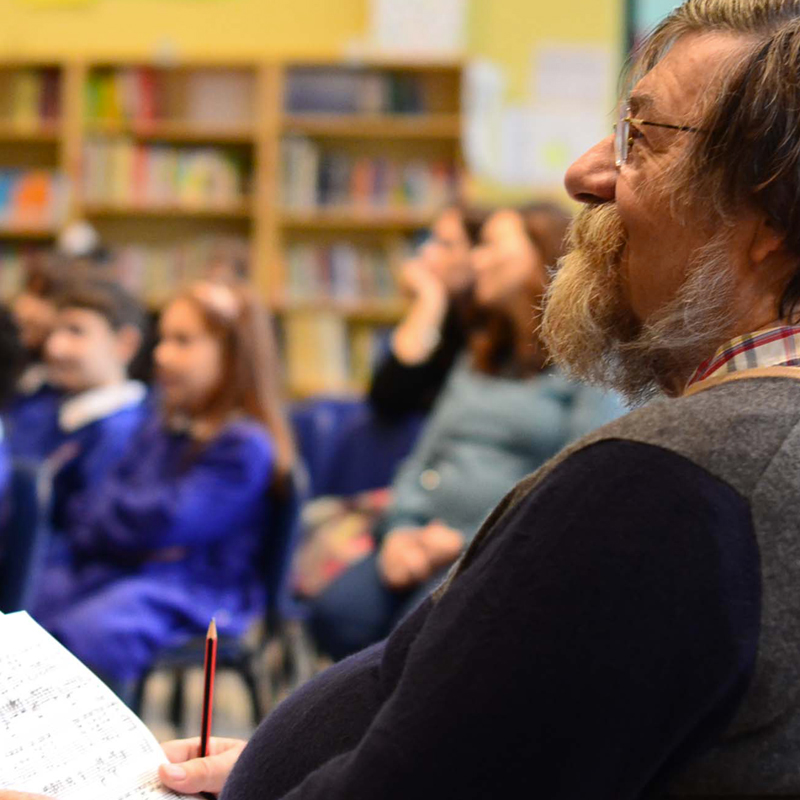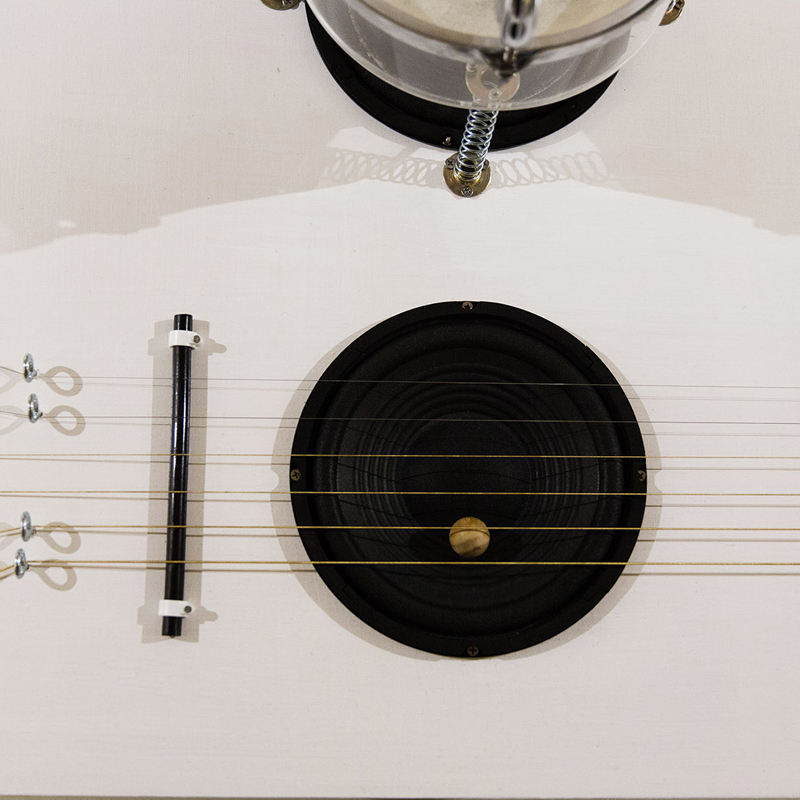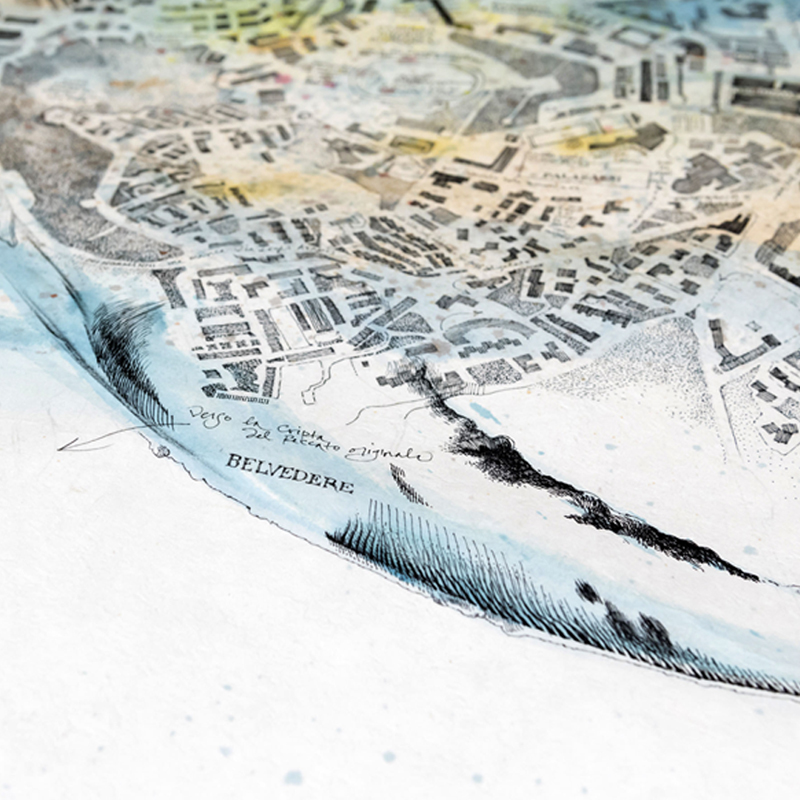Home
The sounds, colours and scents of the Edible Orchestra: bearers of a profound message

A series of concerts, live performances and book presentations dedicated to food and its role not only as food but as a tool for socialising and creativity and an essential commodity for the well-being and economy of a community that can influence environmental equilibrium and stimulate social responsibility. Edible Orchestra offered a programme of innovative activities aimed at spreading these principles which, with the involvement of Italian and European artists, has seen the active participation of citizens.
The initial choice of venue for these events was the fruit and vegetable market, a meeting place and symbol of spontaneous gathering where it is possible to choose and express stances and which lent itself well to the message to be disseminated. The not too favourable climate did not stop the activities but unfortunately meant that they were transferred between the nearby Community Centre of Matera 2019 and the Gervasio auditorium.
On 9 and 10 April, the food designer Nick Difino led dozens of cultural inhabitants and temporary citizens in the preparatory workshops for the performance on Thursday of Les Tableaux Mangeants, an installation consisting of edible elements where food transcends the plate and becomes a palette of colours with which to experiment and seduce. Three days in which we went from talking about foods from memory and tradition to a shared selection of dishes to be cooked, from a lesson in the history of art to sharing the essential notions behind the choice of dishes that responded at the same time to both sentiment and the aesthetics of the work.
Before the artist's performance, there was a presentation of the book by Federico Valicenti Dalla tavola lucana al paradiso, a reading to be decanted like a fine wine. The Basilicata-born chef spoke to us about food as a metaphor for life and sharing because at the table you must be in good company to truly understand the essence of the dishes.
On 12 April the presentation/performance format was repeated with the journalist Stefano Liberti who in the afternoon transported us to the world of large-scale distribution with the book written together with his colleague Fabio Ciconte 'Il grande carrello. Chi decide cosa mangiamo'. At 20.00, Daniele De Michele as his alter-ego Don Pasta presented UNITED FOOD OF MATERA, an original multimedia performance based on the testimonies of eight citizens of Matera and their authentic relationship with food and cooking followed by a 'Cooking DJ Set': vinyl and pots, mixers and blender for a spicy DJ set of sounds from the whole world, including funk, reggae, South American and Mestizo London. A performance where you give yourself over to the excitement of food, its aromas, colours and forms.
On the final evening of Saturday 13 April, the headline event, a concert from the Vegetable Orchestra, was the first of its kind in the world. The distinctive feature of the Viennese ensemble is to perform only with musical instruments made from fresh fruit and vegetables, which for Matera 2019 were created together with temporary citizens.
Aided by drills, knives and screwdrivers, musicians and citizens have turned carrots into flutes or xylophones, leeks into violins and radishes into saxophones. For the concert in Matera an exceptional vegetable, the Crusco pepper, was used to introduce an original version of Stravinsky’s 'Le sacre du printemps', renamed by the orchestra as 'Le Massacre du printemps'.
The mix of sounds produced by vegetable instruments create an unusual and extremely rich universe of acoustics (not to mention the aromas that flood the environment) that could not be achieved with traditional instruments. And the effect is surprising from the very first notes.
Here are a few figures on the vegetables used: 30 aubergines, 5 cucumbers, 3 kg of dried beans, 170 carrots of different sizes, 2 cabbages, 10 Savoy cabbages, 3 large pumpkins, 20 leeks, 5 bunches of parsley, 5 bunches of spring onions, 25 white radishes, 3 bunches of salad greens, 8 celeriac, not to mention a number of large red, yellow and green peppers, onions, potatoes and courgettes.
At the end of the concert, which lasted about an hour, the audience gave a standing ovation not only for the Vegetable Orchestra that has been performing all over the world for 20 years, but also, and above all, for their message: the products of nature are indispensable for the community and must be defended at all costs.
The vegetables were provided for this occasion by Coldiretti Basilicata and, after the performance, they were donated to Don Angelo, pastor of the Church of San Rocco, to make a large soup to feed the poorest members of the parish.
We’re looking for singers for the Silent City community opera

An opera composed with the community, a collective story written by 150 hands that starts from an exploration: the silence that tells of a brusque interruption in the lives of the residents of Matera, once so crowded and noisy. This is Silent City, a story that starts with people, whose privileged voices are those of children and senior citizens – silent generations which lend their voice to the opera, together with composers, musicians, writers, singers, actors, drama tutors and international artists.
The project is co-produced by the Compagnia Teatrale l’Albero, an art collective directed by Alessandra Maltempo and Vania Cauzillo, which has already experimented with new forms of artistic creation for the opera’s new audiences. The innovation of Silent City is to start with a challenge: take the opera where there is no operatic tradition or an opera house. The idea is to recreate the need for a genre, rediscover belonging to a language – the language of theatre in music, which today seems so remote from people.
The community takes on the role of composer and rediscovers opera as a genre for self-expression, in which people can recognise themselves. This is a unique experiment in Italy by Community Opera, which actively involves informal communities coming together in evoking how people lived in ancient times in the Sassi of Matera.
Each phase in the creation of the opera (history, music, libretto, sets and costumes) involves the input of the community, starting from the stories collected by the playwright Andrea Ciommiento – a set designer and curator of relational art projects – who met dozens of children, their families, students, young professionals and senior citizens over 60 in Matera, Potenza and Melfi. The collective story starts with a shared memory: three children from the present who one day escape from the forgotten part of their city – an ancient rocky place where they meet the silence child.
In the next phase the British composer Nigel Osborne, a pioneer in the use of music for children in war zones, Tommaso Ussardi, conductor of the Orchestra Senzaspine and Ubah Cristina Ali Farah, an Italian-Somali librettist and poet, collaborated in writing the music and libretto for the opera, inspired by the stories collected and reworked in the earlier workshops.
After months of work on the co-creation of this novel contemporary opera, the vast journey of Silent City is now nearing its conclusion. In order to stage the opera, the Compagnia Teatrale l’Albero, the Orchestra Senzaspine and Opera Circus (partners in the project) are looking for singers resident in Italy and Europe to join the cast of Silent City. There are various parts that can be applied for and the deadline for applications is 5 May 2019. The call published on the website by the Company provides all the information needed to apply.
The artists chosen will have the opportunity to be the protagonists of a project that represents an open culture in every possible way: open because it is available to everyone; open in its philosophy and emotions; and open because it is founded on dialogue with the places and communities.
Sound art explores and invades the places of Matera 2019

The sounds of IN ViTRØ ~ Artificial sønificatiøn will soon start to echo through the cisterns, subterranean areas, castles and abbeys of Matera and the rest of the region. IN ViTRØ is a sound art project co-produced by LOXOSconcept which explores the relationship between sound and silence with interactive art events and workshops. Exhibitions, installations, performances, residencies, labs and workshops discover the silence that never ceases to involve sound and require its presence.
Significant and everyday places from the past are ideal scenarios in which to start reflecting on how our modern environments are bombarded by sound, but also to suggest how we might move towards a new acoustic ecology. The work Echi d’Acqua (water echoes), for example, offers an artistic interpretation of the Palombaro Lungo, the largest cistern for water collection hidden beneath the central Piazza Vittorio Veneto. The art installation will emphasise the relationship between sight and sound through the sound sign found in the music of five composers. The specific acoustic features and important architectural elements of the Palombaro will be enhanced through visual and musical stimuli: the presence of water, its forms, geometry and flow, sensorial impact of the walls and their colour, the impression of acoustic resonance phenomena.
The Sound Art Exhibition in September still has a call open for artists across the world of all ages to propose a reflection on sound and silence. The art installations, performances and sound sculptures, chosen by a special international committee representing leading art centres, will descend on Matera as expressions of the latest trends in sound art, which will be a veritable sonic invasion!
The competition is in two sections: the first is for existing sound art works to be displayed in the exhibition, while the second is for projects to be developed and presented in the art residencies that will take place in the picturesque locations of the Monastery of Santa Chiara in Ferrandina, the Bottini di Irsina and the Abbey of St Michael Archangel in Montescaglioso. The deadline for submitting proposals is 15 May 2019.
Thanks to the European partnership with ZKM [Center for Art and Media] (Germany), Gaudeamus Muziekweek (the Netherlands), Tempo Reale and Spaziomusica (Italy), EU Japan Fest (Japan) and CeReNeM (UK) the works produced and selected may also be shown in 2020 in other parts of Italy and in Europe, to encourage art mobility.
The IN VITRØ project will launch in May with the section MUTE [silent film mutations] and focus on silent films, in particular on sound and music aspects, in collaboration with the Keyhole Association and the EDISON Studio collective. IN VITRØ concludes in late September 2019 with a new production: a preview performance in Italy of work by the famous Japanese artist Ryoichi Kurokawa.
Information about all the project events can be found on the official calendar, which is regularly updated.
Emotions of the city preserved in the Secretissima Camera de Lo Core

A blue box containing a map of the city, a bookmark with a list of emotions, a few crayons and some sheets of drawing paper for you to record important places in your life. This is the starting point for the long journey of emotions, collected and preserved in the Atlas of the City’s Emotions. Over 300 of Matera’s residents, aged between10 and 80, have been given this box and asked to draw their own ‘emotional map’, identifying places in the city where significant emotional events in their lives have taken place. 300 residents, 300 emotional maps, 3,000 secrets: a first kiss, the route to school, a quarrel, the streets where their grandparents lived, places which are still there, have changed, or have disappeared.
On 23 and 24 March La Secretissima Camera de Lo Core was opened – a site-specific multisensory installation divided into different areas, where residents’ memories bring to life the soul of places. The Chamber, which is the first chapter in the project ‘Atlas of the City’s Emotions’, co-produced by the Teatro dei Sassi, is an innovative way of visiting the city. Secret tales of the city become the spark that illuminates Matera’s streets. The installation will remain open for any visitor with a Matera 2019 Passport until 31 July in the Library, where the cultural heritage of the city is stored.
Some important international partners have contributed to the project. The stories of the ‘emotional map makers’ have been read and adapted by the author Alessandro Baricco with young writers from the Holden School in Turin who, acting as a link between the life of the city and the feelings of its residents, have produced a fascinating and diverse collection of stories ‘from the heart’ of Matera.
Closely connected with the maps drawn by residents are 37 works by the artist Stefano Faravelli – well known for his travel log – and by a group of over 40 artists under his direction, half of whom are from Lucania.
During the inauguration of ‘La Secretissima Camera de Lo Core’ visitors were entertained by choreography designed by the German dancer and choreographer Heike Hennig, who was inspired by the emotional maps, the works by the artists who took part in the ‘apiaries’ directed by Faravelli, and the first stories of young writers from the Holden School.
The design of the Chamber is also the work of Paolo Baroni, who makes theatrical devices and artisan lighting, while the artistic director is Massimo Lanzetta of the Teatro dei Sassi.
The literary and artistic adaptation and the community that collected memories, secrets and stories, have together created a great ‘Mother Map’: an emotional itinerary through the city produced by Stefano Faravelli on rice paper, which describes 15 stages of a novel route including unusual features of Matera and contains the wonderful scroll written by Alessandro Baricco. From 2020, the ‘Mother Map’ will be produced in a pocket-sized format and distributed to visitors who want to follow the ‘emotional places’ route through the city. On returning home, visitors will find a moment to reflect on their experiences of the journey and share them on the Atlas website with all the other ‘emotional travellers’.





